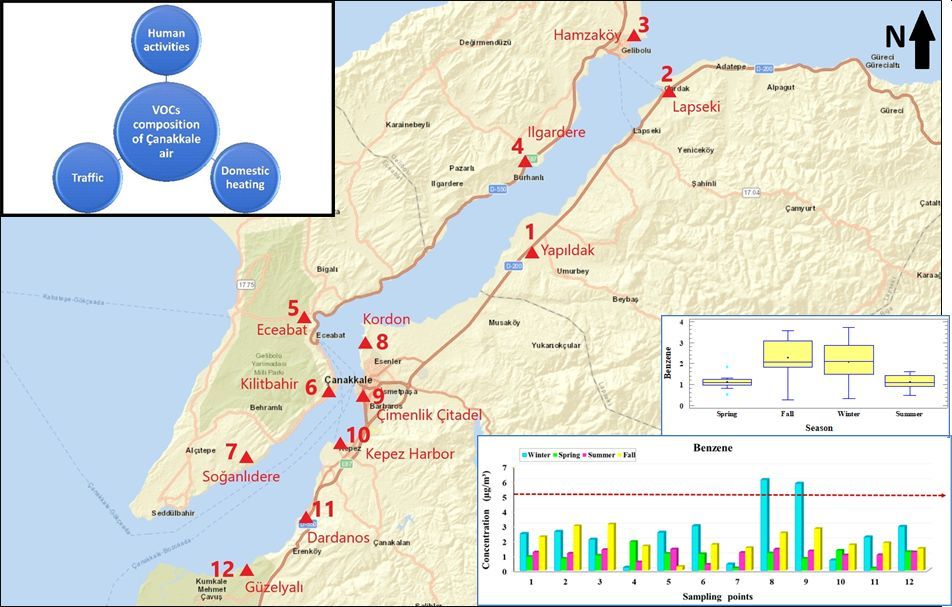JOURNAL 1816
Journal of Chemical Metrology
Year: 2020 Issue: 2 July-December
p.177 - 189
Viewed 2503 times.
GRAPHICAL ABSTRACT

ABSTRACT
Dardanelles strait has a crucial importance on marine transport, splitting Çanakkale city. Combustion-related anthropogenic sources emit volatile organic compounds (VOCs) into the air and they have public concern due to adverse health effects. In this study, composition of ambient VOCs across Dardanelles strait was monitored for 4 seasons over the year of 2018. A total of 12 sampling locations, including 5 locations on the European and 7 locations on the Asian seashores of Dardanelles strait were determined as sampling points. Standard methods were followed during the sampling and analysis of VOCs. VOCs samples were collected on thermal desorber tubes, containing sorbents of Tenax TA and Carbograph 1TD. Active VOC samples were collected by an air sampling pump and passive VOCs samples were exposed to air for 2 weeks. VOCs samples were analyzed by Thermal Desorber followed by Gas Chromatography – Flame Ionization Detector. Target VOCs in this study were paraffins and aromatic hydrocarbons. Limit of quantification was assessed as ≤ 0.1 µg/m3. According to the results of the study, VOCs concentrations varied both spatially and seasonally. The most abundant VOCs in the air were n-pentane, n-hexane, toluene, benzene, and 1,2,4-trichlorobenzene throughout the study. Furthermore, the highest VOCs levels mostly occurred at the locations that were close to the traffic sources and/or residential areas.
KEYWORDS- Ambient air pollution
- Çanakkale
- Dardanelles strait
- gas chromatography
- thermal desorber
- volatile organic compounds